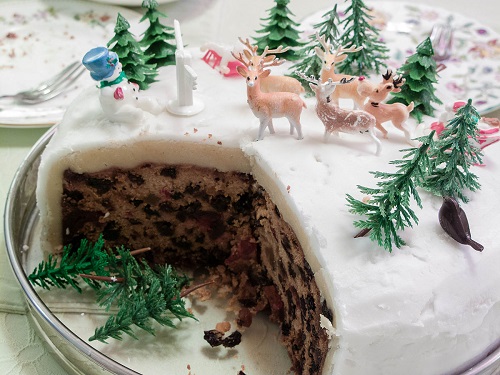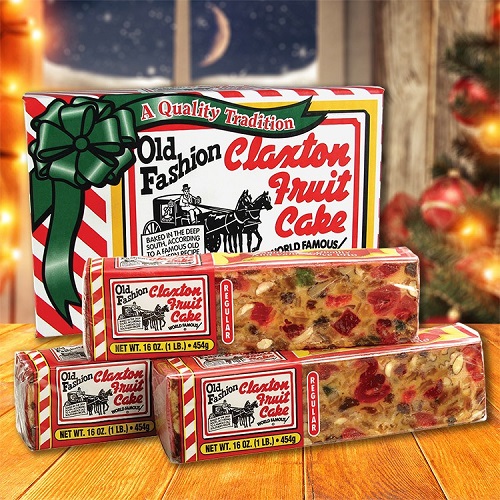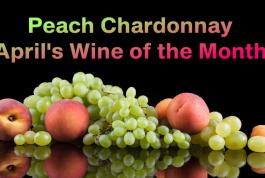Much like the cake itself, this history of Christmas cake is mixed up and dense.
Back in Roman times (27 BC not 476 AD - I had to look these dates up) there was a dessert called Satura — a mixture of barley mash, dried raisins, pine nuts, pomegranate seeds, and honeyed wine. Some historians of Christmas cake will point to this as its true origins.
There are accounts of a cake in Medieval times (5th to 15th centuries) that was a definite precursor to the Christmas cake. According to the records fat, spices and fruits (the best preservatives of their day) were mixed with meats, grains, and vegetables and packed into animal stomachs and intestines so they would keep as long as possible. Another original recipe contained a mixture of finely chopped poultry, pheasant, partridge and rabbit, and sugar, apples, raisins and candied oranges and lemons.
Over time, the meats were eliminated leaving only the sweet ingredients. These ingredients - suet, brown sugar, raisins and currents, candied orange peel, eggs, breadcrumbs, nutmeg, cloves, allspice and plenty of alcohol, are more or less standardized throughout time.
Many historical figures have left their mark on the consumption and creation of Christmas cake.
Pope Innocent VIII (1432-1492) lifted the ban on butter and made the fruitcake better. Church regulations forbade the use of butter in baked goods, because the Advent was a time of fasting. Oil was used as a replacement but made things rather bland and flavourless. This effected the German Stollen more than the British version,
Oliver Cromwell (came to power in 1647) banned Christmas cake , (along with Yule logs, carol-singing and nativity scenes). Such merry-making smacked of Druidic paganism and Roman Catholic idolatry.
George I (1714) England’s first German-born ruler loved the Christmas cake and was given the title “pudding king”.
The Christmas cake's popularity grew with the slave trade in the British colonies (cheap sugar).
For some of the 18th century then outlawed as sinfully rich.
Queen Victoria used it to promote her prim and proper ways. An account tells of waiting an entire year to eat one that she received for her birthday, as she felt ‘it showed restraint, moderation and good taste’.
A prayer book from the Victorian time refers to 'Stir Up' Sunday - the last Sunday before Advent. A prayer begins, “Stir up, we beseech thee, O Lord, the wills of thy faithful people”. Family members take turns stirring up the Christmas pudding-to-be, which was then wrapped and boiled and set aside to mature until Christmas Day. I can attest that your arm gets tired mixing all the ingredients!
And after it is made it is soaked in rum - the weekly 'feeding of the cake', usually with brandy, sherry or whisky is added through small holes in the cake. I remember my mom doing this with cherry brandy!
Often the cake is covered in white marzipan (icing made with sugar or honey and ground almonds),

Coins were also occasionally added to Christmas cakes. It brings good luck for health, wealth and happiness in the coming year!
History.com concludes “the Christmas pudding was a summation of the conception of the world: a globelike mass, studded with savory bits from distant colonies, bound together by a steamed and settled matrix of Englishness.”
It has allowed a taste of home by far-flung soldiers and colonizers.
Christmas pudding and Figgy pudding (mentioned in the second verse of “We Wish You a Merry Christmas”) are really the same thing as most Christmas cakes. Sometimes the pudding is moister, served with a sweet sauce or drizzled with rum and lit on fire!
Why is this once revered dessert now ridiculed? Maybe the mass produced ones did not have enough rum? Johnny Carson has joked about them. There are many Youtube videos of destroying fruit cakes.
Though not as good as my moms, I loved the Claxton Fruit Cakes, made in Claxton, Georgia. Their city water tower reads “Fruitcake Capital of the World.” Their self worth must now be devastated!

But the best fruit cake I can now get locally from Aneal’s (Taste of the Islands) (Yonge & Richmond). Actually, his wife makes them.
I would not call them Christmas cakes but there are other types of cakes eaten at Christmas

- Yule log or Buche Noel – a 19th century creation popular in Belgium, France, Switzerland, Canada (particularly in Quebec), Lebanon, Syria, and several former French colonies chocolate, with white butter cream, maybe some Grand Marnier, and shaped like a log.
- Panettone – Italian sweet sourdough bread with raisins and candied fruit.
- Stollen – a traditional German fruitcake
All are something that are meant to be shared with family. That is good.









